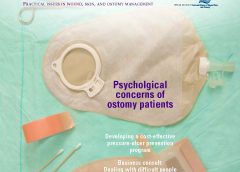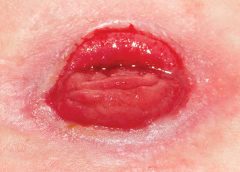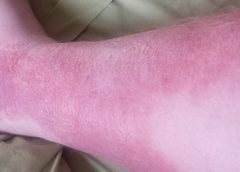Posted: September 25, 2013
Frequent debridement improves wound healing A study in JAMA Dermatology reports that frequent debridements speed wound healing. “The more frequent the debridement, the better the healing outcome,” concludes “Frequency of debridements and time to heal: A retrospective cohort study of 312 744 wounds.” The median number of debridements was two. Most of the wounds in the 154,644 patients were diabetic foot…
Posted: September 25, 2013
Here are some resources of value to your practice. National Guideline Clearinghouse The National Guideline Clearinghouse, supported by the Agency for Healthcare Research and Quality, summarizes many guidelines of interest to wound care, ostomy, and lymphedema clinicians. Here are some examples: Guideline for management of wounds in patients with lower-extremity neuropathic disease Pressure ulcer prevention and treatment protocol Lower limb…

Posted: September 25, 2013
By Gail Hebert, RN, MS, CWCN, WCC, DWC, LNHA, OMS; and Rosalyn Jordan, BSN, RN, MSc, CWOCN, WCC, OMS Imagine your physician has just told you that your rectal pain and bleeding are caused by invasive colon cancer and you need prompt surgery. She then informs you that surgery will reroute your feces to an opening on your abdominal wall.…
Posted: September 25, 2013
By Rose O. Sherman, EdD, RN, NEA-BC, FAAN Unfortunately, most clinicians can’t avoid having to work with difficult people. However we can learn how to be more effective in these situations, keeping in mind that learning to work with difficult people is both an art and a science. How difficult people differ from the rest of us We can all…
Posted: September 25, 2013
By Tamera L. Brown, MS, RN, ACNS-BC, CWON, and Jessica Kitterman, BSN, RN, CWOCN Pressure ulcers take a hefty toll in both human and economic terms. They can lengthen patient stays, cause pain and suffering, and increase care costs. The average estimated cost of treating a pressure ulcer is $50,000; this amount may include specialty beds, wound care supplies, nutritional…
Posted: September 25, 2013
By Gregory S. Kopp, RN, MN, MHA A new job can be stimulating, but it can also be stressful. Not only will you have new responsibilities, but you’ll also have a new setting, new leaders, and new colleagues. And the quicker you can figure out who’s who and what’s what—without stepping on anyone’s toes—the better off you’ll be. But establishing…
Posted: September 25, 2013
By Ronnel Alumia, BSN, RN, WCC, CWCN, OMS Achieving excellent wound care outcomes can be challenging, given the growing number of high-risk patients admitted to healthcare facilities today. Many of these patients have comorbidities, such as obesity, diabetes, renal disease, smoking, chronic obstructive pulmonary disease, and poor nutritional status. These conditions reduce wound-healing ability.
Posted: September 25, 2013
By Janice M. Beitz, PhD, RN, CS, CNOR, CWOCN, CRNP Quality patient education is essential for comprehensive health care and will become reimbursable under healthcare reform in 2014. However, it’s difficult to provide effective education when time for patient interactions is limited. You can enhance your instruction time—and make your teaching more memorable—by using the techniques of analogy and metaphor.
Posted: September 25, 2013
By Jeri Lundgren, BSN, RN, PHN, CWS, CWCN The first 24 hours after a patient’s admission are critical in preventing pressure ulcer development or preventing an existing ulcer from worsening. A skin inspection, risk assessment, and temporary care plan should all be implemented during this time frame. Essentially, it’s the burden of the care setting to prove to insurers, regulators,…
Posted: September 23, 2013
By: Donna Sardina, RN, MHA, WCC, CWCMS, DWC, OMS Why is it that the people who are the most caring toward others neglect their own needs? Have you noticed this? I’ve seen it time and time again. The healthcare worker who’s always the last to leave work, who always volunteers to work those extra shifts so patient care won’t be…





